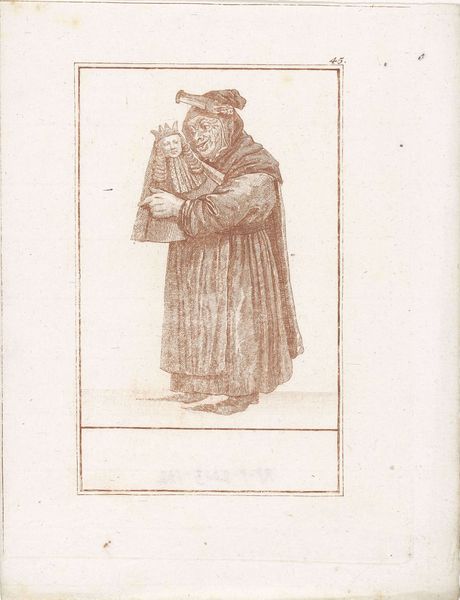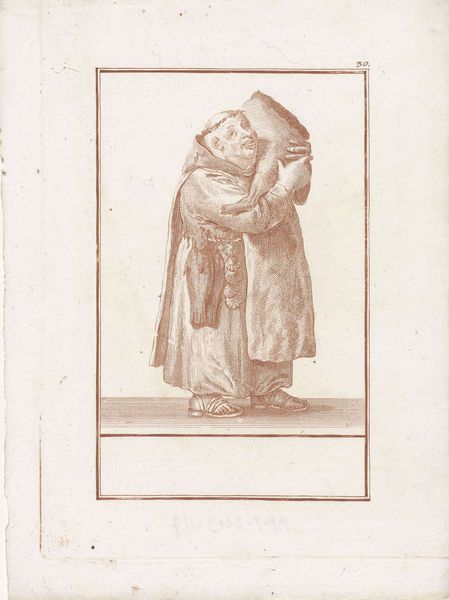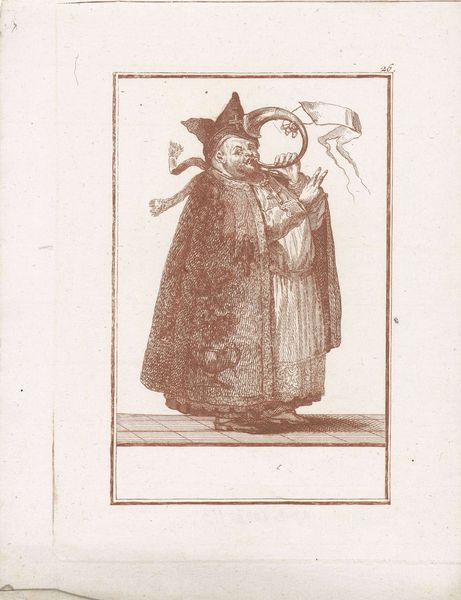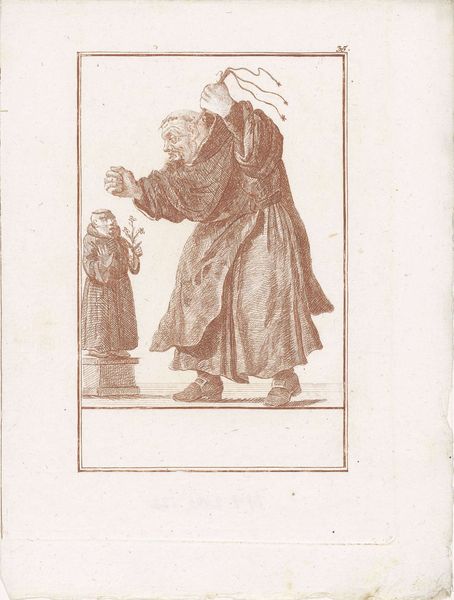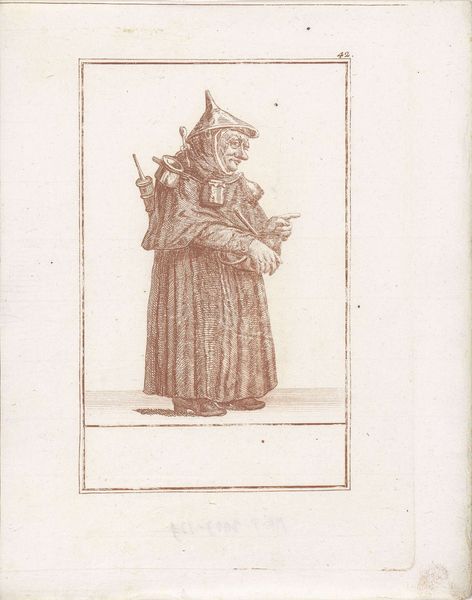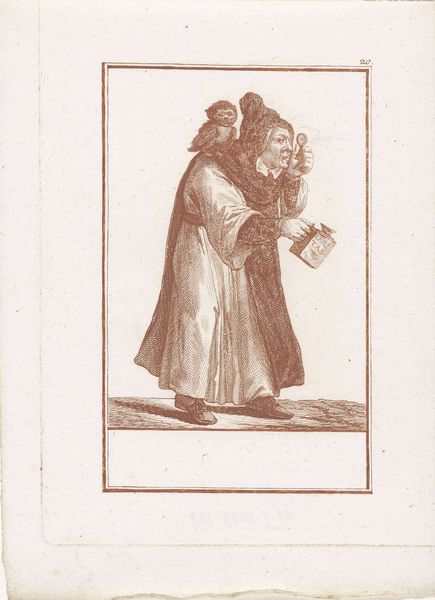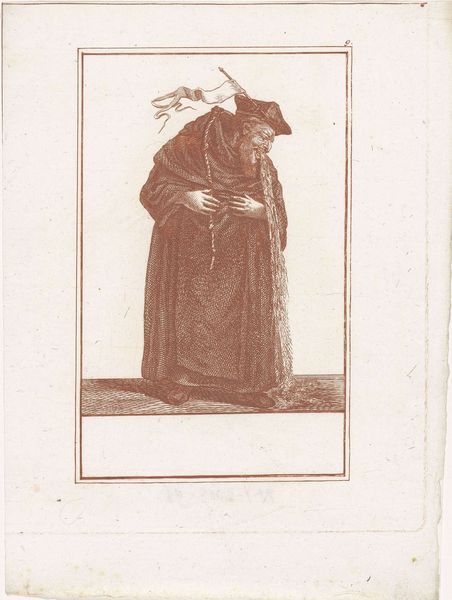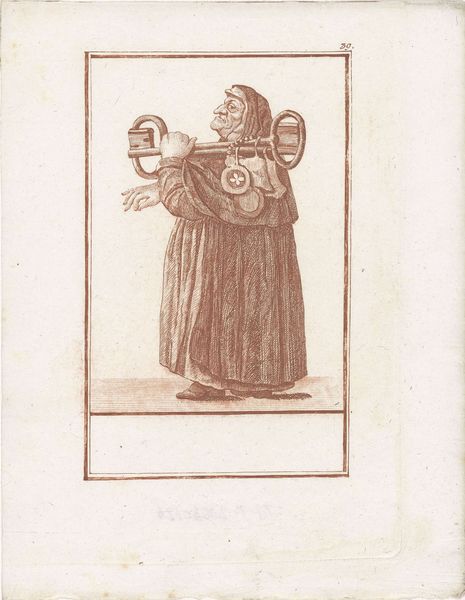
print, engraving
#
portrait
#
baroque
# print
#
old engraving style
#
figuration
#
line
#
genre-painting
#
history-painting
#
engraving
Dimensions: height 231 mm, width 180 mm
Copyright: Rijks Museum: Open Domain
Curator: Jacob Gole's engraving, "Monnik met afgesneden beurs" from 1724, depicts a monk holding a severed purse. The work is currently held in the Rijksmuseum collection. Editor: My immediate reaction is one of bemused darkness. The fine lines create a grotesque caricature, almost like a page ripped from a book of naughty satire. There's an uneasy humor about it. Curator: Considering Gole's background in the printmaking milieu of the Dutch Golden Age, it's important to recognize how engravings like these circulated commentary on social issues, targeting perhaps clerical corruption or the illusion of piety. The material—the very paper and ink—facilitated the rapid dissemination of such critiques. Editor: The stark composition guides the eye immediately to the severed purse, then to the monk's face. The textures, especially in his cloak, show expert use of hatching to define form with very little tonal variation, almost like architectural rendering. There's a fascinating interplay of light and shadow that contributes to the dramatic flair typical of the baroque style. Curator: Right. And that dramatic effect was calculated, designed to resonate with a specific, emerging consumer class eager for moral and political commentary. The production of these engravings speaks directly to a demand fueled by changes in economy and readership, wouldn’t you say? Editor: I'd agree to an extent. The subject, this satirical portrayal of a potentially corrupt figure, is certainly what provides the primary draw for viewers. But looking at Gole's rendering, notice how the gaze is captured: the specific expression and composition make the monk both pitiful and despicable simultaneously. I suppose the point is that form underscores and amplifies the social narrative you are describing. Curator: Fair enough. It's a stark image no matter how one approaches it, from a materialist perspective, considering the engraving as a mass-produced commentary, or through the lens of formalism, emphasizing Gole’s use of line, tone, and composition. Both point towards the social function of art, if only implicitly. Editor: Precisely. Regardless of our different approaches, analyzing this work proves insightful because it provides valuable glimpses into not only period craft and technique but into humanity’s unchanging anxieties and concerns as well.
Comments
No comments
Be the first to comment and join the conversation on the ultimate creative platform.
